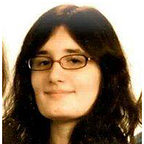Progression Pictures: Weeks 4 & 5
I’ve got around two weeks of progress to sort through since I missed the last update, so let’s not waste any time and get right to it!
The first thing I wanted to talk about was my trip to the Museum of the American Revolution, which in my opinion is one of the finest instances of classic museum exhibits working in harmony with modern technology.
There, I found the perfect examples of what I’d like from my project in their touchscreen exhibits. Contacting Sarah Polansky, an employee of Bluecadet who had a hand in making those touchscreen programs, has helped to steer me in the right direction where audience interactivity is concerned in my own project. One of the roadblocks I’ve been dealing with since the beginning was figuring out how much programming I’d need to do, and with the help from Sarah and my classmates, I have a good approximation of that. The the free-to-use touch slider Swiper is my most promising lead so far, so over the next week that is what I’ll be experimenting with. With a bit of work (and probably some dumb luck), I should have the beginnings of a program I want to best represent my gallery.
The biggest development in the past week has been Henri’s journey from Maya file to 3D print. In my last update, the lovable lug had his model completed, but I hadn’t advanced any further than that. Now, however, I am extremely happy to present, Henri!
He still needs a good amount of sanding to smooth out some polygonal imperfections and rough patches left behind from the obscene amount of supports needed for the print (see below), but considering this was my first complicated print job, I’m more than pleased with how he turned out.
There were two failed attempts before this one, and they can both be chalked up to my inexperience modeling around the limitations of the printer. One of the crucial elements I failed to keep in mind was the necessity for the model to have as wide and as flat a base as possible, so the printer has something to build off of. Those failed attempts were the result of Henri’s “base” — his small back feet and the flats of his knuckles, in this case — being too flimsy to keep its form. So to compensate, a “raft” was added to the model. The option to create a sturdy layer of material under a model was an ingenious bit of user-friendly design on Cura's part, as it almost seems like the software developers anticipated a scenario where a modeler failed to incorporate a proper base.
To close out this update, here’s the completed time-lapse video that will be playing behind Henri’s display come April.
